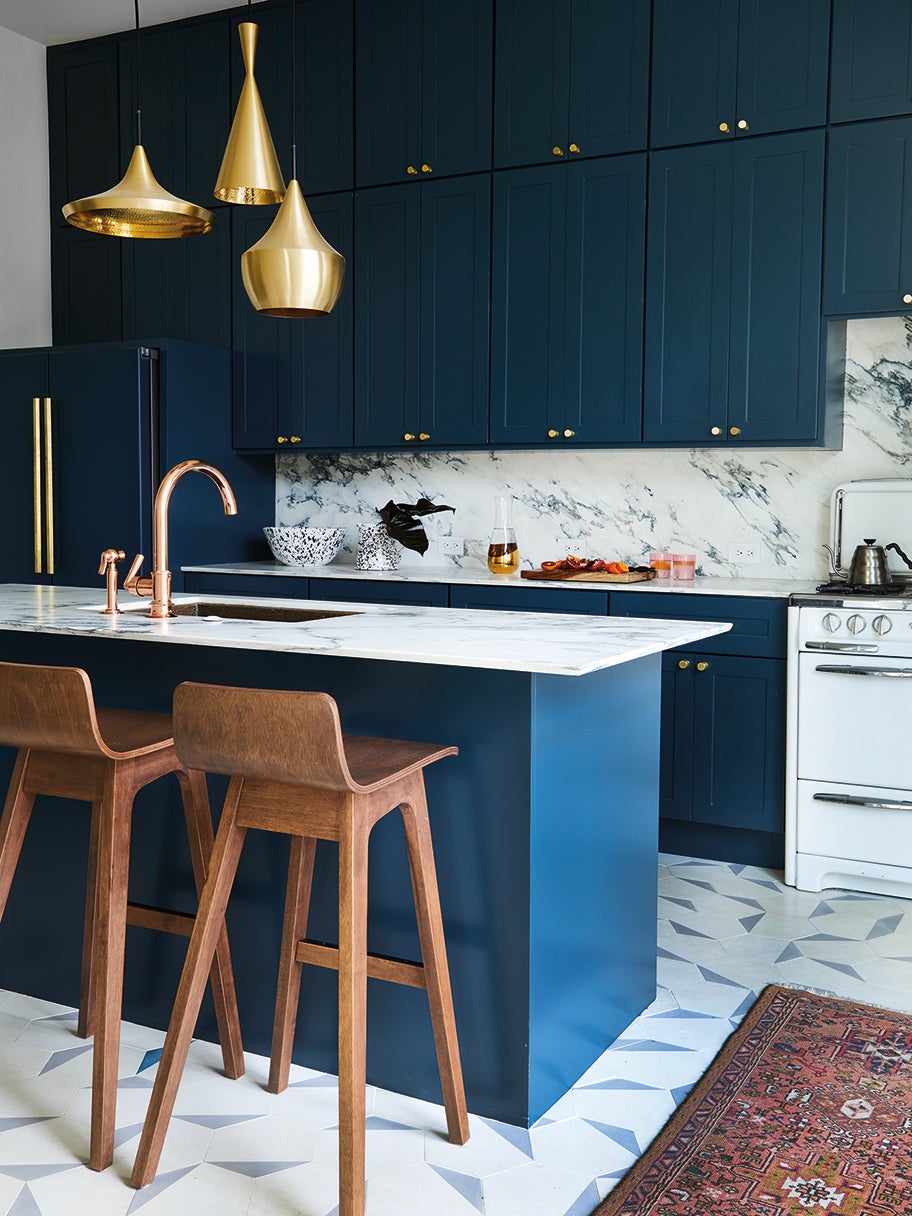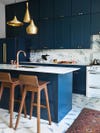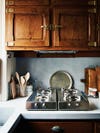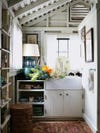Which Kitchen Cabinet Hinges Are Right for You?
Because they’re just as important as the knobs.
Updated Oct 11, 2018 7:08 PM
We may earn revenue from the products available on this page and participate in affiliate programs.
Splashy wall colors, ribbed cupboard paneling, cool vintage knobs…you have to go pretty far down the list of fun-to-choose elements before you get to kitchen cabinet hinges. But the details are what make a space feel bespoke, so those littlest accents should be carefully considered. There’s more to this utilitarian piece of hardware than meets the eye—the question is, which style is right for you?
Some installation processes are trickier than others, but for the most part, it all comes down to personal preference. We asked Angela Cacace, founder of A.Marie Design Build, to weigh in on the three most popular types.
The Vintage Charmer
The hinge: Face frame
What to know: When we say this type has old-world character, we’re not just talking about aesthetics. Traditionally, exposed hardware like this comes from a time where concealed hinges didn’t exist. Now, with more people getting into antique fixtures, it’s seeing a resurgence; Cacace notes that it’s more popular with renovators interested in refinishing their cabinetry (for example, distressing their doors) rather than replacing it.
Best for: Bringing in texture. “Plus they’re an opportunity to emphasize the overall look of industrial or farmhouse cabinets,” says Cacace. Pick a polished brass option to instantly warm up your space.
The Chic Compromise
The hinge: Inset
What to know: This style requires more attention to detail than the rest, Cacace points out. Because wood naturally expands, you have to carefully consider every 1/16 inch of these joints—you may even have to make some adjustments when the weather changes.
Best for: Adding texture without giving up a clean look—use it to add a bit of metallic contrast to an all-white space.
The Modern Minimalist
The hinge: Concealed overlay
What to know: According to Cacace, this is the most popular style. There are many soft-close varieties within this category that make concealed overlays a hit with anyone averse to slamming doors. They’re more often used in full renovations, but are easier to adjust down the line if any wood expanding happens.
Best for: Contemporary kitchen updates, given it’s a relatively new hinge on the market. “Especially when replacing builder-grade ’80s or ’90s rooms,” she explains. If sleek silhouettes and unfussy finishes are what you’re after, this is the hinge for you.
See more kitchen cabinet ideas: Which Kitchen Cabinet Door Style Is Right for You? 4 Fresh Takes on Contemporary Kitchen Cabinets 5 Cream-Colored Kitchen Cabinet Paints the Pros Swear By




